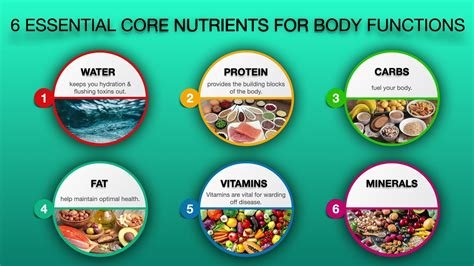This blog post discusses how natural language processing (NLP) improves customer experiences by enabling more efficient and human-like interactions between businesses and their clients. It starts by explaining the importance of NLP in customer service and outlines the technologies behind its functionality. Key applications include chatbots, sentiment analysis, and personalized communication, which enhance user interaction. However, challenges such as data quality and integration issues may hinder implementation. The article also presents successful case studies showcasing effective NLP adoption. Looking ahead, future trends like real-time language processing and AI advancements are explored, alongside best practices for integrating NLP in customer support systems. Lastly, the conclusion emphasizes the critical role of data quality in NLP performance and encourages businesses to adopt NLP strategies to enhance their customer experience effectively.
Understanding The Importance Of Natural Language Processing
Natural language processing (NLP) has become an indispensable tool in improving customer experiences. It allows businesses to analyze and interpret human language in a way that enhances interaction and engagement. When discussing how natural language processing transforms customer service, it is essential to consider its profound impact on communication, data analysis, and overall user satisfaction. Companies are increasingly recognizing that by harnessing the power of NLP, they can create a more personalized and efficient customer journey.
One of the core advantages of utilizing NLP in customer service is its ability to streamline communication channels. It integrates effortlessly with various platforms, enabling businesses to respond to customer inquiries in real time. This responsiveness leads to increased customer satisfaction and loyalty, as customers appreciate timely and accurate responses to their queries. Additionally, the data extracted from these interactions allows businesses to gain valuable insights into customer preferences and pain points.
Key Benefits Of NLP In Customer Experience:
- Enhanced customer engagement through personalized interactions
- Improved response times in customer service inquiries
- Accurate sentiment analysis to gauge customer feelings
- Automated systems that reduce workload on human agents
- In-depth analysis of customer feedback for better service improvement
- Multilingual support catering to a diverse customer base
- Cost efficiency through automation of routine inquiries
These benefits culminate in a richer customer experience, reinforcing the importance of implementing NLP technologies in business strategies. By focusing on how natural language processing can reshape customer interactions, companies can carve out a competitive edge in their industries. As organizations continue to invest in these technologies, the overall quality of customer service will improve, creating valuable relationships that drive customer loyalty and business success.
How Natural Language Processing Works In Customer Service
Natural Language Processing (NLP) is revolutionizing how businesses interact with their customers. By leveraging this technology, companies can streamline their customer service processes, improve satisfaction, and foster loyalty. How Natural language techniques enable customer service agents to understand and respond to customer queries more efficiently, creating a more engaging and personalized experience for users.
When properly implemented, NLP can transform large amounts of unstructured data into actionable insights. This technology analyzes customer inquiries, sentiment, and behavior, allowing businesses to tailor their responses based on individual needs. As a result, customers feel heard and valued, enhancing their overall experience with the brand.
Steps To Implement NLP Solutions
- Define clear objectives for NLP integration.
- Choose the right NLP tools and platforms.
- Collect and preprocess relevant data.
- Train the NLP model using accurate datasets.
- Integrate NLP solutions with existing customer service platforms.
- Constantly evaluate and refine NLP performance.
- Engage in user feedback to improve the system iteratively.
Through this process, businesses can identify and address consumer pain points more effectively. Understanding the technology and its capabilities is crucial for successful implementation, which can lead to significant improvements in customer experiences.
Understanding NLP Technology
Natural Language Processing is a branch of artificial intelligence that focuses on machine understanding human language. This technology breaks down language into manageable parts, allowing systems to interpret and respond appropriately. As a result, companies can automate responses to common customer queries, reducing wait times and improving efficiency in customer service.
Identifying Customer Pain Points
With NLP, businesses can gain insights into customer pain points by analyzing patterns in communications. By examining the sentiment and frequency of issues raised, organizations can prioritize which problems to address first. This targeted approach not only helps in resolving individual issues but also contributes to overall improvements in service quality. As companies adopt How Natural language techniques, they unlock new avenues for enhancing customer interactions and ensuring satisfaction.
Key Applications Of NLP In Enhancing User Interaction
Natural Language Processing (NLP) has transformed the way businesses interact with customers, making service more efficient and personalized. With an increasing emphasis on understanding and leveraging customer insights, How Natural language technologies can provide deep insights into user intent and satisfaction levels.
One of the most significant applications of NLP is the development of advanced chatbots. These intelligent virtual assistants are designed to interpret user queries in natural language, providing instant responses and assistance. By leveraging NLP, businesses can enhance customer support and improve user engagement, fulfilling requests faster than traditional methods.
Types Of NLP Applications
- Chatbots for 24/7 customer service
- Sentiment analysis for understanding customer feelings
- Text summarization for efficient information delivery
- Machine translation for global reach
- Named entity recognition to identify specific data points
- Speech recognition for hands-free operations
- Content recommendation systems for personalized experiences
Another critical application of NLP is sentiment analysis, which allows businesses to gauge customer opinions and emotions. By analyzing reviews, comments, and social media interactions, companies can gain valuable insights into user sentiment towards their products and services. This helps in tailoring marketing strategies and enhancing customer relationships.
“NLP not only improves interaction but also builds trust and loyalty among customers.”
In summary, integrating How Natural language processing into customer interactions opens new doors for businesses. The utilization of chatbots and sentiment analysis exemplifies how technology can meet and surpass customer expectations, ultimately leading to increased satisfaction and loyalty.
Challenges Faced In Implementing NLP Technologies
Implementing Natural Language Processing (NLP) technologies poses multiple challenges that organizations must navigate carefully. One of the foremost obstacles is the complexity of understanding and processing human language, which is inherently nuanced and contextual. Companies often grapple with varying dialects and slang that can significantly impact the effectiveness of NLP applications. Thus, achieving desired accuracy in understanding customer inquiries can be a tough road.
Another significant challenge lies in data quality and availability. NLP systems require extensive amounts of high-quality, labeled data to learn effectively. Unfortunately, many organizations lack the necessary datasets or face issues with data cleanliness, leading to subpar model performance. This affects the overall deployment of How Natural solutions, particularly when consensus on the data strategy has not been achieved across the organization.
- Common NLP Implementation Obstacles
- Data quality issues
- Lack of skilled personnel
- Integration with legacy systems
- Insufficient funding for resources
- Language and dialect variations
- Real-time processing requirements
Moreover, organizations face integration challenges, particularly when aligning NLP systems with existing technologies. Legacy systems may not easily adapt to new NLP capabilities, requiring significant development and resources to bridge the gap. Additionally, How Natural solutions must conform to various regulatory requirements, which can add layers of complexity to their deployment. Engaging in a thorough assessment of existing infrastructure is crucial to pave the way for successful NLP integration.
Case Studies: Successful NLP Implementation Examples
Understanding the transformative impact of how natural language processing (How Natural) fits into enhancing customer experiences is essential. Several companies have demonstrated effective implementations of NLP technologies, showcasing innovative strategies that lead to impressive results. Through these case studies, organizations can learn how to leverage NLP to improve communication and service delivery.
For instance, one of the standout applications of NLP is the integration of voice assistants. By adopting sophisticated algorithms and machine learning techniques, businesses can enhance their customer interaction processes. The increased efficiency and accuracy of these systems not only improves user satisfaction but also streamlines operations, making it a win-win situation for both customers and companies.
Notable Companies Using NLP Effectively
- Amazon – Alexa voice assistant
- Google – Google Assistant
- IBM – Watson Assistant
- Apple – Siri
- Microsoft – Cortana
- Salesforce – Einstein Language
Following this trend, companies are also beginning to harness the power of predictive text. By anticipating user inquiries and enhancing typing experiences, businesses can significantly improve the speed and accuracy of communication. This not only optimizes customer service interactions but also reduces response times, facilitating smoother conversations and ultimately leading to higher customer satisfaction levels.
Company A: Voice Assistants
Take, for instance, a leading technology firm that implemented a voice assistant capable of understanding and processing customer queries in real time. This innovation allowed the organization to cater to customers 24/7, significantly reducing wait times and improving engagement. Moreover, the accuracy with which the voice assistant handled various accents and dialects was remarkable, ensuring a more inclusive experience for all customers.
Company B: Predictive Text
Another notable example is from an e-commerce company that integrated predictive text into their chat support system. This simple yet effective tool anticipated customer queries and offered suggestions while typing. As a result, customer service representatives were able to respond faster and with higher precision, leading to an overall enhancement in customer engagement. This implementation showcased how using How Natural language processing can redefine user interaction in digital landscapes.
Future Trends In Natural Language Processing
The landscape of Natural Language Processing (NLP) is constantly evolving, paving the way for enhanced how natural customer experiences can be achieved. As technology advances, businesses are increasingly adopting NLP to better understand and engage with their customers. These innovations not only improve communication but also streamline processes, leading to significant improvements in customer satisfaction and loyalty.
One of the most notable emerging trends in NLP is the rise of emotional analysis. By understanding the emotions behind customer interactions, companies can tailor their responses and services to meet specific emotional needs. This allows organizations to create a more empathetic customer service experience, thereby fostering stronger connections. Furthermore, the integration of artificial intelligence and machine learning enhances the ability of NLP systems to learn from customer interactions, making them more efficient over time.
Emerging Trends In NLP
- Emotion Recognition: Identifying customer sentiments to tailor responses.
- Conversational Agents: Utilizing chatbots for 24/7 customer support.
- Multilingual Capabilities: Bridging language barriers for global outreach.
- Real-time Processing: Offering immediate responses through advanced algorithms.
- Personalization: Customizing interactions based on individual customer data.
- Integration with IoT: Enhancing user experience through connected devices.
- Content Summarization: Automatically condensing information for clarity.
Another promising direction for the future of NLP lies in its potential to enhance voice recognition technology. As virtual assistants become more prevalent in everyday life, improving their ability to understand context and nuance will greatly enhance user experience. By adopting voice-enabled NLP solutions, businesses can effectively interact with customers in a more natural way, making it easier for users to get the support they need.
As advancements continue, the synergy between AI, ML, and NLP will further transform customer interactions, enabling businesses to provide tailored experiences that resonate with their audience.
Overall, the continuous evolution of NLP technologies will play a vital role in shaping the customer service landscape. Organizations that capitalize on these how natural advancements will not only improve their operational workflows but also enhance their overall customer engagement strategies. Adapting to these emerging trends is essential for staying competitive in today’s dynamic market environment.
Best Practices For NLP Integration In Customer Support
As businesses continue to embrace technology, integrating Natural Language Processing (NLP) into customer support systems becomes paramount. Understanding the nuances of how natural language processing can transform service interactions is essential for enhancing customer satisfaction and operational efficiency. Companies can significantly improve customer experiences by adhering to established best practices in NLP integration.
To effectively implement NLP in customer support, organizations must prioritize specific strategies that ensure seamless operation. A successful NLP integration not only involves deploying technology but also requires continuous refinement and user feedback. Ensuring that the NLP systems are aligned with both business objectives and customer needs lays the foundation for sustainable improvement and user satisfaction.
Essential Steps For Effective NLP Integration
- Assess the current customer service processes to identify pain points.
- Determine the goals for NLP implementation based on customer needs.
- Select the right NLP tools and technologies that best fit the business model.
- Incorporate machine learning to enhance response accuracy over time.
- Train customer service agents to work alongside NLP technology.
- Gather feedback post-implementation to identify areas for improvement.
- Continuously evolve the NLP systems based on customer interactions and trends.
Employing these steps can significantly enhance the effectiveness of NLP in customer support settings. Additionally, maintaining a clear communication channel between the technology and support teams will facilitate quicker iterations and adaptations. This collaborative approach fosters an environment where both customer feedback and technological advancements are valued, leading to higher efficiency.
In conclusion, leveraging NLP technologies in customer support requires a systematic approach focused on understanding customer behavior and refining processes to meet those needs. By prioritizing best practices, organizations can ensure that NLP integration yields the desired results, enhancing both customer experience and satisfaction. Ultimately, the key lies in understanding how to harness the power of technology to meet the evolving demands of customers effectively.
The Role Of Data Quality In NLP Performance
In the realm of How Natural Language Processing (NLP), data quality plays a pivotal role in determining the success of any model. High-quality data not only enhances the accuracy of NLP algorithms but also ensures better contextual understanding, leading to improved customer interactions. When data lacks quality, the models trained on such data can yield misleading results, which negatively impacts user experience and brand trust.
The effectiveness of NLP systems hinges on several factors that contribute to data quality. Accurate and relevant data allows these systems to learn effectively, ensuring they grasp nuances in language and context. Conversely, poor data quality can lead to misconceptions, errors, and ultimately, a breakdown in communication. Organizations must prioritize data quality to harness the full potential of NLP technology in customer service.
- Consistency in data collection methods
- Accuracy and reliability of data sources
- Completeness of data sets
- Relevance of data to specific use cases
- Timeliness of data updates
- Standardization of data formats
- Detection and removal of duplicate entries
Implementing best practices for maintaining data quality is essential for maximizing the performance of NLP applications. Regular audits, machine learning techniques for identifying anomalies, and continuous data enhancement efforts can all contribute to maintaining high standards. These practices ensure that NLP models are built on a solid foundation, ultimately leading to superior customer experiences and interactions.
“Quality data is at the heart of effective NLP. It drives the precision and reliability of insights generated, thereby influencing customer satisfaction.”
In summary, organizations investing in How Natural Language Processing technology must be vigilant about the quality of data used. This commitment to excellence not only enhances the capability of NLP systems but also delivers significant competitive advantages in customer support and engagement.
Conclusion: Taking Action With NLP For Enhanced Customer Experience
Integrating How Natural language processing (NLP) technologies into business practices is becoming increasingly indispensable for enhancing customer experiences. Organizations that harness NLP can analyze customer interactions, predict their needs, and provide solutions more effectively. The end result is not just improved customer satisfaction, but also a stronger organizational reputation for service excellence.
To fully capitalize on the benefits of NLP, companies must focus on specific actions. Firstly, developing a clear understanding of customer journeys is essential. This knowledge allows organizations to pinpoint where NLP can have the most significant impact, such as automating responses to common queries or personalizing communication. Additionally, investing in training for staff on the capabilities and limitations of NLP technologies can foster a culture of innovation and readiness for change.
Remember, enhancing customer experiences with NLP is not a one-time effort, but a continuous process requiring regular updates and adaptations to the technology and strategies employed.
Here are some Actionable Takeaways For Businesses to consider when implementing NLP solutions:
- Assess current customer service processes to identify areas where NLP can be beneficial.
- Choose NLP tools that align with your business needs and customer expectations.
- Train employees on how to use NLP technologies effectively to optimize interactions.
- Collect feedback regularly to refine NLP applications and address limitations.
- Monitor the impact of NLP on customer satisfaction and adjust strategies accordingly.
- Stay informed about advancements in NLP to continuously enhance your customer service approach.
In conclusion, the proactive integration of How Natural language processing can transform the customer experience landscape. By taking actionable steps and committing to ongoing improvements, businesses can not only meet but exceed the evolving expectations of their customers, thereby achieving a competitive edge in the market.









